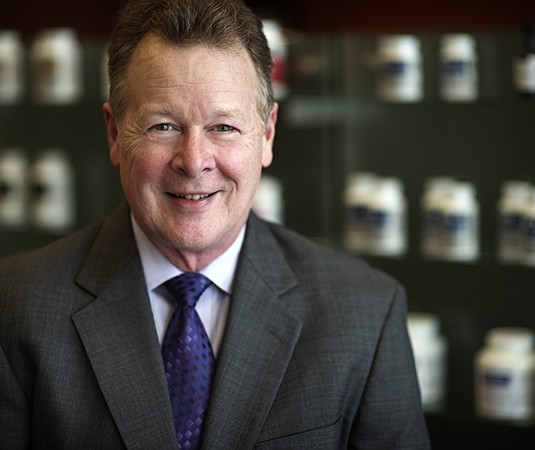By Jim Paoletti, BS Pharmacy, FAARFM, FIACP, Director of Education at Power2Practice
Estrogen patches claim to deliver from 0.25 mg to 1.0 mg of estradiol in a 24-hour period. These numbers are based on the amount of estradiol that is measured in venous serum blood following administration. However, the venous serum level of hormones has not necessarily been shown to reflect actual tissue activity of a topically applied hormone.
In my opinion, venous serum testing for topical hormones is a procedure which has been thrust upon us due to its use by drug manufacturers in studies of products. While the manufacturers assume the process is valid, there is little scientific validation that it actually works.
Is the patient receiving too much estrogen when she uses an estrogen patch?
I would assume so until proven otherwise. The amount of estradiol in one patch that supposedly delivers 175 mcg over a 3 ½-day period is over 4 mg (or 4000 mcg) total. The estradiol passed into the skin from the patch from passive diffusion. 4000 mcg compared to 175 mcg is a very large concentration difference—one that seems overly large to create passive diffusion.
With transdermal creams, gels and sprays that claim only 10% delivery or absorption of the hormone, we see huge increases and supra-physiologic levels of hormones in saliva or capillary blood, which are representative of the amount of hormone in other tissues. Therefore, we know that the serum measurement for topically applied hormones grossly under-represents the amount of hormone that actually gets into the system. Why would it be any different for estradiol from a patch?
Do saliva levels reflect too much estradiol when a patch is used?
Typically the saliva estradiol level is somewhat higher than the level of a non-supplemented premenopausal woman. However, it is usually not as high as I would predict from what is seen with other transdermal products. This is somewhat difficult to explain, but perhaps there are changes in estrogen metabolism when a patient uses an estrogen patch. The main difference with the patch (as compared to other routes of administration) is that patches provide a very constant amount of estrogen delivered over time.
Normal estrogens levels vary widely throughout the day, with a diurnal production pattern. Perhaps with the constant level amount provided with the patch, the body adjusts the estrogen metabolism. If we really wanted to know how much estrogen was getting into the patient’s body, it would be very interesting to study the estrogen levels in serum blood vs. saliva, and at the same time measure any changes in the major estrogen metabolites.
So, you don’t recommend the estrogen patch?
Generally no, as I prefer to avoid its use until I know for certain I am not overdosing estradiol and producing an unnecessarily higher amount of potentially carcinogenic metabolites. I have to assume that the 10% “delivered” amount as stated by the manufacturer is invalid, as it has been shown to be with most transdermal manufactured products.
Until I know better, I recommend estradiol in a cream base for transdermal administration.
Jim Paoletti, BS Pharmacy, FAARFM, FIACP, is the Director of Education at Power2Practice and a Clinical Consultant with over 30 years’ experience creating and using bio-identical hormone therapies in both retail pharmacy and clinical practice.
Jim is a Diplomat in Functional Medicine in addition to being a former faculty member for the Fellowship of Functional Medicine.
At Power2Practice, Jim applies his wealth of knowledge and experience by hosting live webinars and creating useful content, such as blogs, podcasts and clinical support tools.

